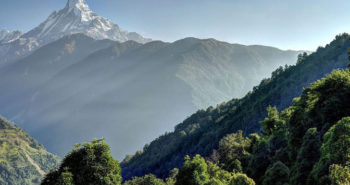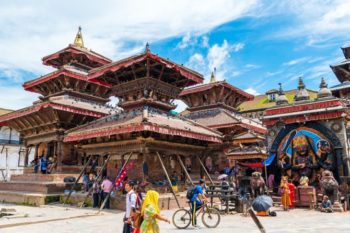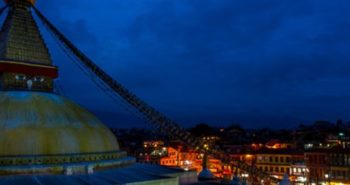Everest Base Camp Trek Altitude Sickness
1. What causes altitude sickness?
- Altitude sickness happens when you cannot get enough oxygen from the air at high altitude. Most often this is because people who are not used to high altitude go up too quickly.
2. At what height can you get altitude sickness?
- Altitude sickness can even happen as low as 2,500m – but that would be mild. More usually, symptoms may appear at altitudes of 3,500m and above.
3. What does high altitude do to your body?
- After humans reach the height of around 2,100m, the amount of oxyhemoglobin saturation in the blood begins to plummet. In other words, the amount of oxygen in the blood is reduced.
4. What are the symptoms of altitude sickness?
The symptoms of mild to moderate acute mountain or altitude sickness may include:
- Difficulty sleeping
- Fatigue
- Headache
- Loss of appetite
- Nausea or vomiting
- Rapid pulse (heart rate)
- Shortness of breath with exertion
The more severe systems usually occur over 3,500m, and can result in high altitude pulmonary edema (HAPE) or high altitude cerebral edema (HACE).
5. Can altitude sickness kill you?
- Yes! But if caught in time, after 2 or 3 days at a lower altitude, most people make a full recovery!
6. What is HACE?
- High altitude cerebral edema is a medical condition where the brain swells with fluid because of the physiological effect of travelling to a high altitude. It generally appears in patients who have acute mountain sickness. Symptoms include disorientation, lethargy and nausea, among others.
7. Am I at risk of altitude sickness?
- There is no knowing who will suffer from altitude sickness. It does not follow that the younger and fitter people will not get altitude sickness where the older and less fit will. It is not related to (general) fitness or age.
8. Then, how do I avoid altitude sickness?
- To prevent altitude sickness proper acclimatization is needed at 2,500 and above. Ascending slowly will give your body time to adapt to the change in altitude. If trekking alone – always give yourself an extra two or three days to acclimatize. For those trekking with a registered company, acclimatization days will have already been built into your trip.
9. Is there anyone way to avoid altitude sickness?
- Drink plenty of fluids, especially water, and eat enough food. Avoid alcohol, especially in the first two days at high altitude. There are also medicines such as Diamox which can be taken to prevent altitude sickness. Consult your doctor before leaving home.
10. Am I likely to get altitude sickness on my trek?
- At elevations above 3,500m you need to be aware. As all treks in the Everest Region are at higher altitude, you should remember the golden rules:
Never go up if you have any symptoms of altitude sickness.
Go down if your symptoms are not improving or appear to be getting worse.
How to prevent altitude sickness
Acclimatize!
- Take it easy. Spend your first day at high altitude relaxing.
- Do not smoke or drink alcohol.
- Drink extra water.
- Eat food high in carbohydrates.
- Take headache medicine if necessary.
If you have any symptoms, do not continue going up. Wait until the symptoms go.
Important!
Severe altitude sickness HACE and HAPE will leave the sufferer disoriented and less able to make good choices. If you are not travelling with a registered guide/ trekking company, you should be especially vigilant and aware if you develop ANY symptoms. And always – GO DOWN! The mountains will be there the next day also.
Altitude Sickness in the Everest Region
As soon as you fly into Lukla you are already at an altitude of 2,860m. On day two most people are at Namche Bazaar at 3,438. Here you MUST have an acclimatization day. Certainly, that doesn’t mean you need to just stay in your hotel – taking a trip to Khumjung and Khunde, which are at a higher altitude, is not only interesting but gets your body used to both hiking and the high altitude. As you will, most likely, be coming back down to Namche to sleep, that is ideal. Trek high, sleep low.
Most trekkers then head to Tengboche Monastery for the spectacular views. Remember that’s an increase of over 1,000 metres in one day. And again, the next day to Dingboche another 400 metres. It is recommended that everyone takes another acclimatization day at Dingboche (4,400m). Again, hiking to Chukung or Nagarjun Hill is a good idea to get used to the high altitude, particularly as Nagarjun Hill is at 5,000m. Again, trek high, sleep low.
For those going on to Everest Base Camp where the viewpoint Kalapatthar is at 5,500m or who are going on over some of the high passes, also around the same elevation, please be especially careful when trekking without a registered guide/ trekking company (who will be keeping an experienced eye on the health of clients).
To sum up, anyone can suffer from altitude sickness. It is not a reflection of your overall fitness. In fact it is often the young and ‘fitter’ trekkers who suffer more as try to ascend too fast, walk too quickly and often ignore what their body is telling them. But if you acclimatize well and remember the golden rules, you will be fine!
- Never go up until any altitude sickness symptoms go away
- Always go down if symptoms persist and
- If possible, trek high and sleep low
Safe trekking!


